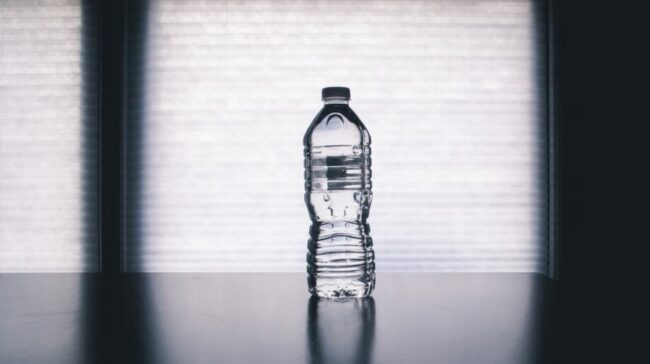You’re making your morning coffee or perhaps, you’re simply in need of some hot water. The quickest method at hand? The microwave. But wait, your water is in a plastic bottle. You pause, pondering the age-old question: is it safe to microwave a plastic water bottle? It’s a concern that carries weight, given the potential health risks and, let’s be honest, the potential mess. Let’s sift through the science, the guidelines, and even the folklore to set the record straight.
Table Of Contents
−- Why You Should Be Cautious: The Fundamentals of Plastic and Microwaves
- The Science of Microwaving Plastic: What Actually Happens?
- Evaluating the Risks: What Could Go Wrong?
- Identifying Types of Plastic: Your Guide to the Recycling Numbers
- Verifying BPA-Free Plastics
- Timing Is Everything: Safe Microwaving Durations
- The Safest Method: How to Properly Microwave a Plastic Water Bottle
- Conclusion
Why You Should Be Cautious: The Fundamentals of Plastic and Microwaves
Here’s the foundational piece of advice: not all plastic is created equal when it comes to microwaving. While some plastic containers are labeled as “microwave-safe,” others are definitely not built to withstand the heat. Typically, single-use plastic water bottles are made of a type of plastic called PET or polyethylene terephthalate, which is indicated by a recycling number 1 at the bottom of the bottle. While PET is often considered microwave-safe to some extent, it’s generally safer to go with plastic labeled as #5.

The Science of Microwaving Plastic: What Actually Happens?
When you microwave plastic, heat can cause the material to break down. If that occurs, there’s the potential for chemicals like BPA and phthalates to leach into your water. This is an issue because these substances are endocrine disruptors, which can lead to a variety of health problems. So, unless the plastic explicitly states it’s microwave-safe, you’re better off not taking the risk.
Evaluating the Risks: What Could Go Wrong?
It’s not just about potential chemical leaching. Microwaving water in a plastic bottle can produce uneven heating, creating hot spots in the water. If the water overheats, there’s a risk of the bottle warping or even exploding. That’s not a mess you want to clean up, nor is it particularly safe to drink the water afterward.
Identifying Types of Plastic: Your Guide to the Recycling Numbers
There are various types of plastic, each with its own characteristics. If you look at the bottom of most plastic containers, you’ll see a recycling symbol—a triangle made up of three arrows—with a number inside. This number tells you the type of plastic you’re dealing with:
- Polyethylene Terephthalate (PET or PETE, #1): Commonly used for soda bottles and cooking oil containers.
- High-Density Polyethylene (HDPE, #2): Found in milk jugs and detergent containers.
- Polyvinyl Chloride (PVC, #3): Generally not food-safe and is often used in shower curtains.
- Low-Density Polyethylene (LDPE, #4): Used in food packaging and squeeze bottles.
- Polypropylene (PP, #5): A safer option for food storage containers and baby bottles.
Verifying BPA-Free Plastics
A concern for many is whether their plastic bottle contains BPA. To verify this, flip the bottle and look for the recycling code. Numbers “1, 2, 4, 5, 6” usually indicate that the plastic is BPA-free. Conversely, if you see a “3,” there’s a good chance the plastic contains BPA.
Timing Is Everything: Safe Microwaving Durations
The length of time you can safely microwave a plastic water bottle depends on several factors, including the bottle’s material and the microwave’s wattage. As a rule of thumb, don’t go beyond 2 minutes if you’re using a high-wattage microwave. Lower wattage units will give you a bit more leeway, perhaps up to 5 minutes, but always use the lowest heat setting to minimize risk.
The Safest Method: How to Properly Microwave a Plastic Water Bottle
If you’re in a situation where you absolutely have to microwave a plastic water bottle, follow these precautionary steps:
- Check the Recycling Code: Confirm it’s a #5 plastic.
- Set the Temperature: Keep the microwave at low or medium heat.
- Remove the Cap: Allowing for steam to escape.
- Microwave in Short Intervals: This helps you avoid overheating the bottle.
Conclusion
If you find yourself asking whether it’s safe to microwave a plastic water bottle, the simplest answer is to proceed with caution. Opt for microwave-safe plastics if you have to, but your safest bet is to use ceramics or glass for heating food and beverages. Microwaving single-use or non-labeled plastics carries a set of risks that you’re better off avoiding.
So next time you need hot water in a pinch, think twice before popping that plastic bottle into the microwave. Your health—and your microwave—will thank you.

Editorial Staff
Our writers, editors, content managers, and SEO specialist. We all take part in crafting amazing articles. We spend hours ensuring that each article is based on facts, researched, and thorough. You'll never want to click the back button to look for more answers other than here!
